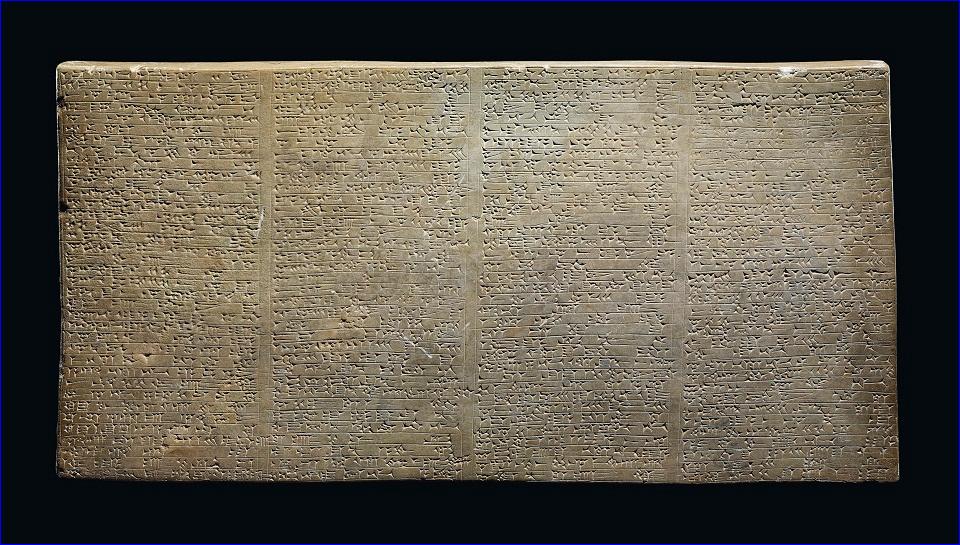


Tukulti-Ninurta I, whose name means 'my support is in Ninurta' (the warrior god), achieved major victories against the Hittites and the Kassites, thereby absorbing Babylonia into the Assyrian empire, an event alluded to in the epic of Tukulti-Ninurta, the most important Assyrian epic known.
A hugely successful military leader, he is credited with expanding the empire to both the north and south, and ensuring Assyrian supremacy in the region. Formerly in a German private collection, this important panel provides a new record of the conquests and building work of Tukulti-Ninurta I. This panel is the only complete version of this significant text, which was previously known only from 18 fragmentary clay and stone tablets, and the most detailed Assyrian royal inscription to have been discovered to date.
The early civilisations of Mesopotamia (modern-day Iraq) have been in the spotlight recently with the publication of The Ark Before Noah: Decoding the Story of the Flood by Irving Finkel of the British Museum, and the broadcast of the accompanying BBC documentary. Through deciphering and studying another newly-discovered cuneiform text, Dr. Finkel presents a new interpretation of the flood story and the building of the Ark. It is fascinating to see the number of cuneiform texts which have strong links to the Biblical tradition; the king named in the panel sold on 1 October has been connected to the Old Testament figure of Nimrod.

or register to post a comment.